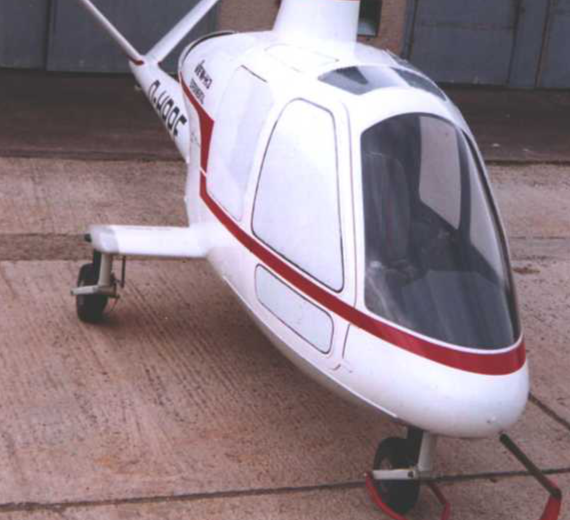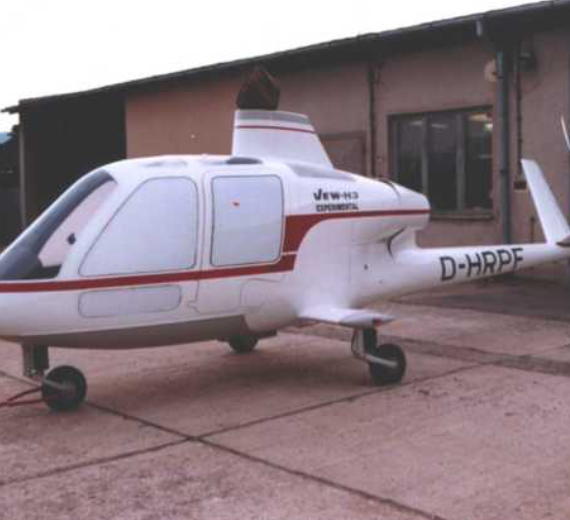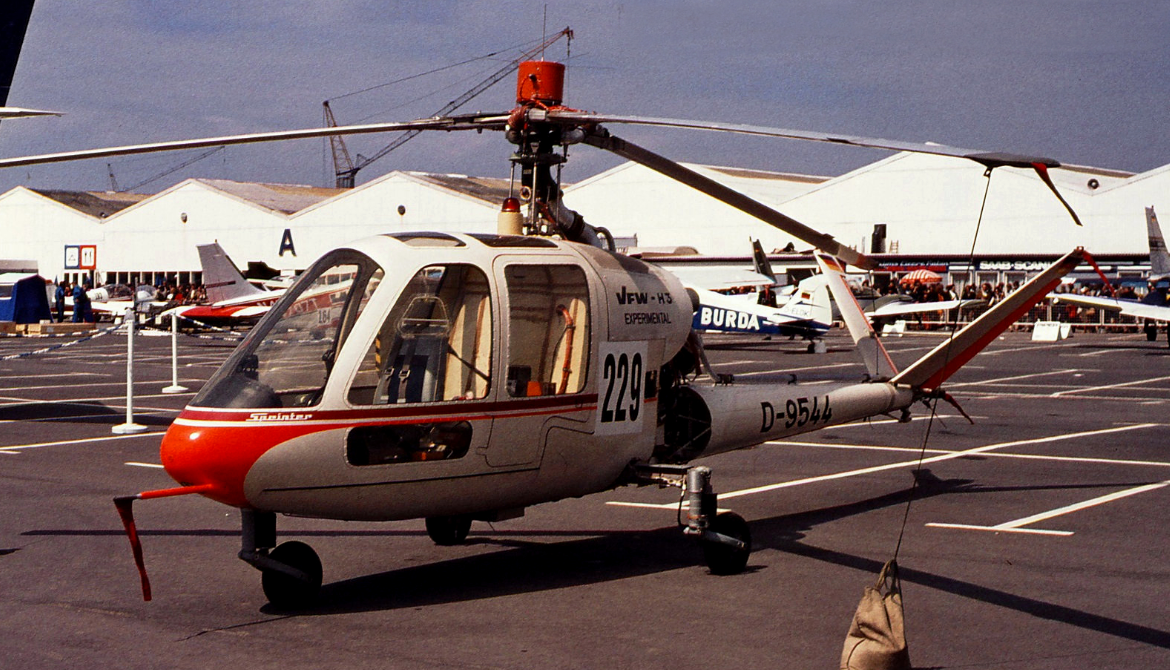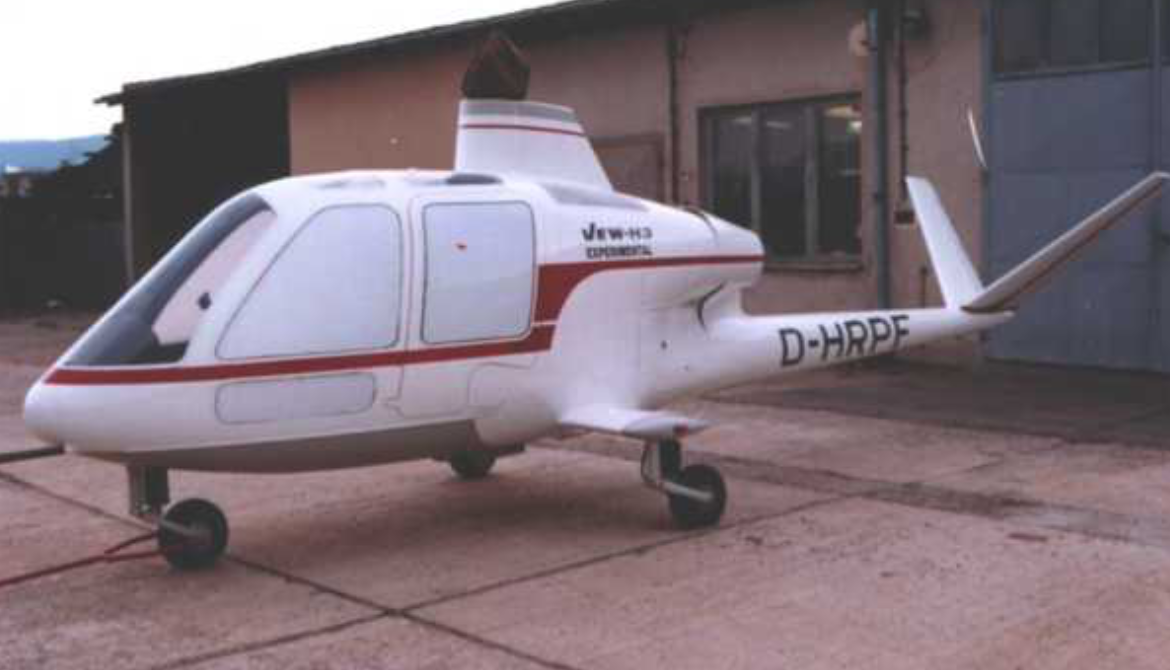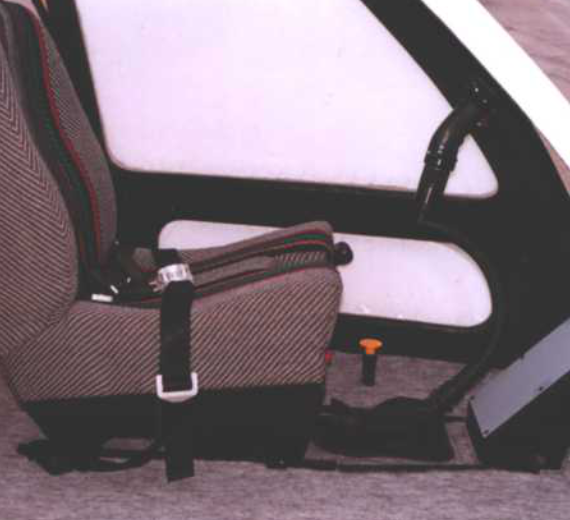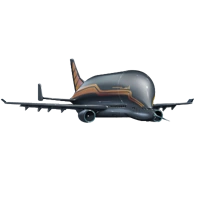VFW-Fokker H3 Sprinter
 |
|
| VFW-Fokker H3 on display at the Hubschraubermuseum Bückeburg | |
| Role | Experimental rotorcraft |
|---|---|
| Manufacturer | VFW-Fokker |
| First flight | 15 March 1971 |
| Produced | 2 |
|
|
.
History Fokker-Flugzeugwerke
VFW-Fokker H3 Sprinter

The VFW-Fokker H3 Sprinter was a single-engined experimental rotorcraft designed and built in West Germany. Two aircraft were produced by VFW-Fokker in the early 1970s, registered D-9543 and D-9544. Intended as the first of a family of tip-jet driven helicopters the two H3 prototypes flew briefly but the method of rotor propulsion was found to be unsuccessful for this size of aircraft. Due to a high rotor overspeed, they could perform jump take-offs to 280 feet (85 m) at a rate of 1,600 feet (490 m) per minute. An improved H4 variant was designed but not built.
Development and production
Both aircraft have survived. D-9543 is currently on display at the Hubschraubermuseum Bückeburg[2] with the other H3 thought to be in a private collection in Germany.
Design

The H3-E was built with a mission as a three-seat executive transport, two-stretcher ambulance aircraft, or an agricultural system with a payload of up to 315kg.
The design incorporated a compressed air and blade tip-drive rotor. The separate forward-thrust system consisted of fuselage-mounted fans.
Sizewise, the H3-E had a fuselage length of 9.3m. The maximum height was 2.5m, which included the rotor head. The landing gear track was 2m, while the rotor disc area was 60m2
0
KmCeiling
0
KmCombat RANGE
0
Km/hAircraft Speed
0
Max Crew
Photo Gallery
VFW-Fokker-Flugzeugwerke
VFW-Fokker H3 Sprinter


VFW Fokker-Flugzeugwerke
VFW-Fokker H3 Sprinter
General Info
-
-
- Crew: One
- Capacity: 2 passengers and 270 kg
- Length: 7.37 m (24 ft 2.25 in)
- Wingspan: 8.70 m (28 ft 6.52 in)
- Height: 2.50 m (8 ft 2.43 in)
- Max takeoff weight: 968 kg (2,134 lb)
-
Performance
- Cruise speed: 250 km/h 155 mph,
- Service ceiling: 4,000 m
-
.
Links to Youtube & Others
The earliest production D.VIIs were equipped with 170–180 hp Mercedes D.IIIa. Production quickly switched to the intended standard engine, the higher-compression 134 kW (180–200 hp) Mercedes D.IIIaü. Some early production D.VIIs delivered with the Mercedes D.IIIa were later re-engined with the D.IIIaü.
Fokker-Flugzeugwerke
VFW-Fokker H3 Sprinter
The engine originally considered to be used in this craft was an Allison 250 C-20, driving both an air compressor to supply air to the rotor tip nozzles as well as the shrouded fans via a combined gear box.
Youtube Link
Since the craft isn’t equipped with the fans, neither the gearbox nor the drive shafts are required. Hence, the original engine (which wasn’t purchased with the helicopter) had been replaced by a GTCP85-100 air compressor gas turbine engine.
